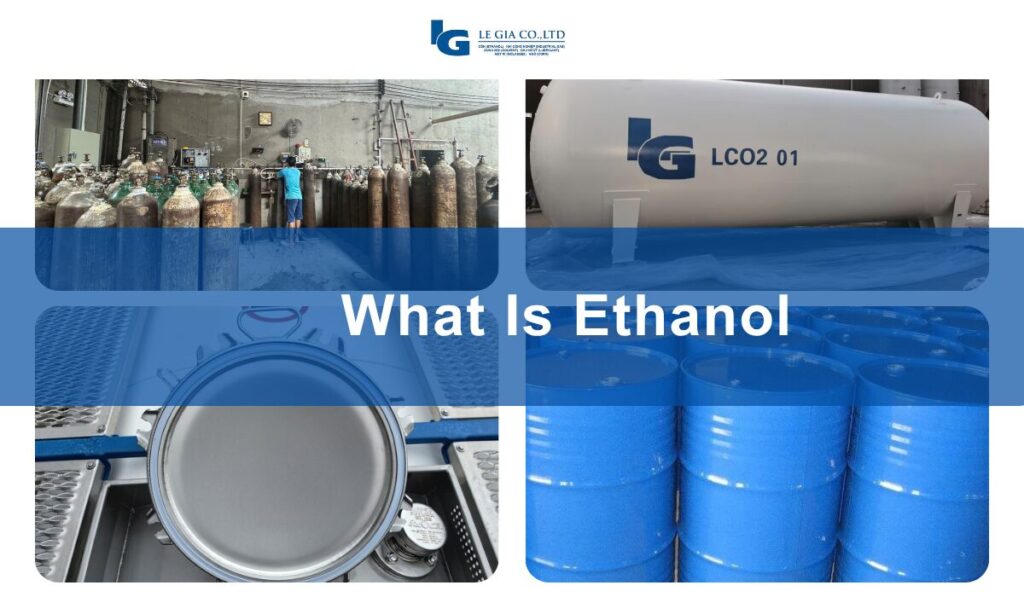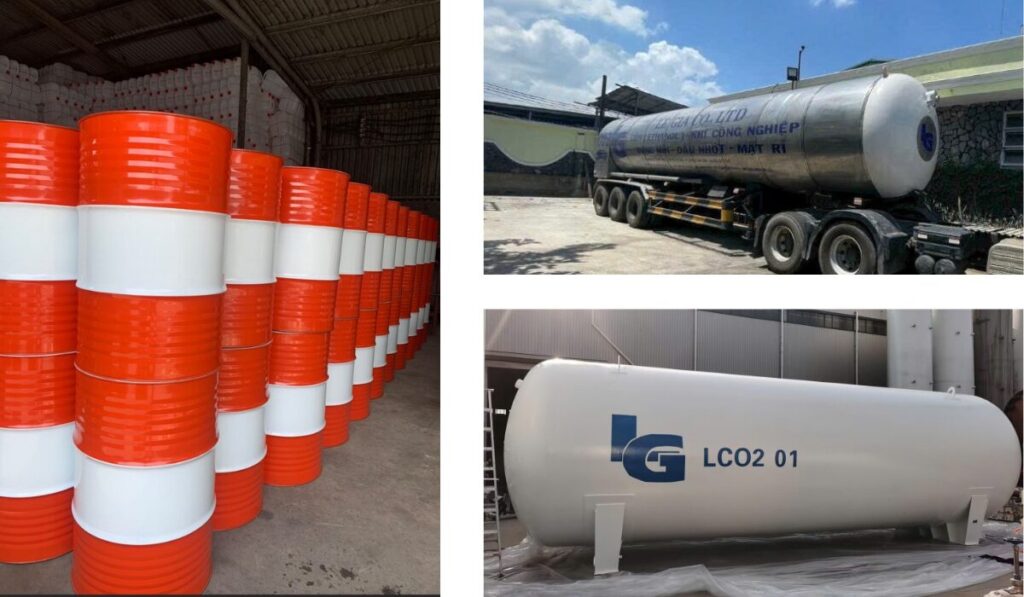Have you ever wondered: What is ethanol – that clear liquid found in alcoholic beverages, hand sanitizers, and even vehicle fuel – and why is it so important in our daily lives?
As experts in the production, supply, and distribution of ethanol, we’re here to provide more than just a definition. This guide will reshape how you understand this essential chemical compound and its crucial role in modern industry.
What Is Ethanol and Why Is It Important?

Ethanol (C₂H₅OH) is an organic compound belonging to the alcohol family, characterized by a molecular structure containing a hydroxyl group (-OH) attached to an ethyl group. Physically, ethanol exists as a colorless liquid with a boiling point of 78.37°C (173°F), high volatility, and a distinctive mild odor.
Ethanol is naturally biosynthesized through fermentation, where yeast (Saccharomyces cerevisiae) converts carbohydrates into ethanol and carbon dioxide. This is the only type of alcohol that the human body can tolerate in reasonable amounts, completely different from toxic alcohols like methanol or isopropanol.
The Importance of Ethanol
Ethanol plays a pivotal role in the global economy through three main application pillars:
- Biofuel Energy: A crucial renewable fuel that reduces dependence on fossil fuels and protects the environment
- Medical and Pharmaceutical: Functions as a solvent and essential disinfectant in pharmaceutical production and medical equipment
- Chemical Industry: Serves as a versatile solvent in organic synthesis, cosmetics production, and consumer goods
Ethanol is not merely a simple chemical compound but the foundation of many modern industries, representing the perfect intersection of basic science and practical application.
How Does Ethanol Differ From Other Alcohols Like Methanol or Isopropyl Alcohol?
Although all belong to the alcohol compound group and share similar chemical properties, ethanol holds a special position as the only alcohol safe for human consumption in moderate amounts.
This difference isn’t just in molecular structure but manifests clearly through biological effects, practical applications, and toxicity levels that are completely opposite between ethanol and methanol or isopropyl alcohol.
| Characteristic | Ethanol (C₂H₅OH) | Methanol (CH₃OH) | Isopropyl Alcohol (C₃H₈O) |
|---|---|---|---|
| Common Name | Ethyl Alcohol, Grain Alcohol | Wood Alcohol, Methyl Alcohol | Isopropanol, Rubbing Alcohol |
| Primary Uses | Beverages, biofuel, solvent, pharmaceuticals | Industrial solvent, chemical raw material (highly toxic) | Skin disinfectant, medical equipment, electronics solvent |
| Toxicity | Low (when consumed moderately) | Extremely high – causes blindness, nerve damage, death | Toxic (not for consumption), safer for external use |
| Source | Natural fermentation or synthesis | Chemical synthesis, wood distillation | Chemical synthesis |
What Are the Physical and Chemical Properties of Ethanol?
Distinctive Physical Properties of Ethanol
The molecular structure with hydrogen bonding determines ethanol’s unique physical properties:
- Optimal Boiling Point: 78.37°C (173°F) – This property allows efficient separation of ethanol from mixtures through distillation
- Superior Volatility: The scientific basis for applications in cosmetics and disinfectants
- Complete Solubility: The hydroxyl group (-OH) forms hydrogen bonds with water, ensuring absolute miscibility
| Technical Parameter | Value (at 25°C) | Application Significance |
|---|---|---|
| Density | 0.789 g/cm³ | Lighter than water, advantageous for transport |
| Dynamic Viscosity | 1.2 mPa·s | High fluidity, easy to pump and spray |
| Flash Point | 13°C (55°F) | Warning: High fire and explosion risk |
Chemical Mechanisms and Characteristic Reactions
Ethanol demonstrates versatility through key chemical reactions:
1. Complete Combustion Reaction:
C₂H₅OH + 3O₂ → 2CO₂ + 3H₂O + EnergyClean blue flame without smoke – the foundation for biofuels
2. Catalytic Dehydration Reactions:
- At 140°C: Forms diethyl ether (C₂H₅OC₂H₅)
- At 170°C: Produces ethylene (C₂H₄) – an important polymer raw material
3. Esterification Reactions:
Combines with carboxylic acids to create aromatic esters – the basis of the fragrance industry
Safety Considerations: Why Is Ethanol Highly Flammable?
Ethanol has a flash point of only 13°C (55°F) for pure ethanol. This means that even at room temperature, ethanol vapor is concentrated enough to ignite instantly upon contact with a spark.

Safe Storage Principles:
✓ Store in a dry, cool, well-ventilated area away from heat sources and sparks
✓ Use specialized, sealed containers with clear labeling
✓ Ensure good ventilation systems to prevent vapor accumulation
✓ Keep away from oxidizing agents and incompatible materials
✓ Have appropriate fire extinguishing equipment nearby
Common Applications of Ethanol
Understanding what ethanol is becomes more meaningful when we see its diverse applications:
1. Fuel and Energy
- Blended with gasoline (E10, E15, E85) to reduce emissions
- Pure ethanol as renewable fuel for specialized vehicles
2. Medical and Healthcare
- Hand sanitizers (typically 60-95% concentration)
- Medical disinfectant for equipment and surfaces
- Pharmaceutical solvent and preservative
Explore more information about medical ethanol
3. Food and Beverage Industry
- Alcoholic beverages (beer, wine, spirits)
- Food flavoring and extracts
- Food preservation
4. Industrial and Manufacturing
- Solvent in paints, lacquers, and coatings
- Cosmetics and personal care products
- Laboratory reagent and chemical synthesis

Conclusion: The Versatility of Ethanol
So, what is ethanol? It’s far more than just the alcohol in your drink or the active ingredient in hand sanitizer. Ethanol is a fundamental chemical compound that bridges the gap between renewable energy, medical safety, industrial innovation, and everyday convenience.
Understanding ethanol’s properties, applications, and safety requirements helps us appreciate its critical role in modern society while using it responsibly and effectively. Whether as a clean-burning fuel, a life-saving disinfectant, or an essential industrial solvent, ethanol continues to prove its value as one of chemistry’s most versatile compounds.
